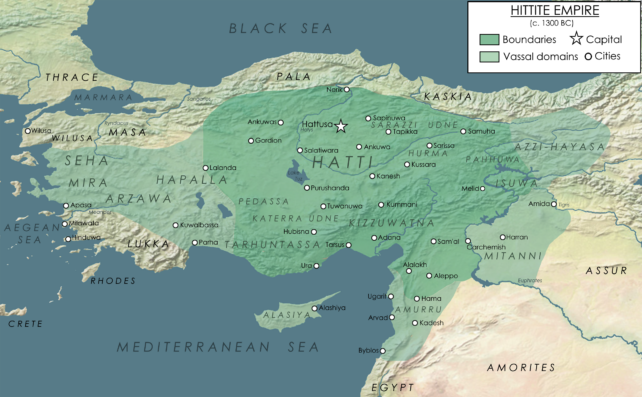Archaeological discoveries in Turkiye have recently uncovered a long-lost language, providing intriguing insights into the linguistic and cultural complexities of the ancient Middle East. The newly discovered Kalasma language was found through cuneiform tablets excavated in Hattusa, the former capital of the Hittite Empire, located in the central Anatolian region of Türkiye. This significant finding enhances our knowledge of the Indo-European language family and offers a glimpse into the diverse linguistic landscape of Late Bronze Age Anatolia.
The Hittite Empire was a major power in the Eastern Mediterranean and Near East from 1650 to 1200 BCE. It had control over vast regions, including central, southern, and south-eastern Anatolia, the northern Levant, and northern Syria. This era was marked by intense socio-political dynamics as the Hittites and the Egyptians competed for dominance. The empire was known for its military prowess and rich cultural diversity, as it was a melting pot of various ethnic groups and languages. This diversity is reflected in the different scripts found in Hattusa’s extensive tablet archives.
The recent discovery of Kalasmaic writings sheds light on the linguistic diversity and multicultural aspects of the Hittite empire. The Kalasmaic language, spoken by a people from the northwestern edge of the empire, has more similarities with Luwian, rather than Palaic, which was spoken in nearby regions. This finding suggests the existence of complex linguistic relationships and cultural exchanges within the empire. The Hittites were known for their openness to recording rituals in foreign languages and for embracing different religions and deities from various regions, implying a culture of tolerance and a possible strategy for political stability.
The ongoing research into these discoveries highlights the role of language in promoting multiculturalism and political stability within the Hittite Empire. The Hittite leaders, through their civil service, systematically recorded religious ceremonies and traditions of subject peoples in their local languages. This practice preserved these traditions and facilitated their incorporation into the wider empire, showcasing an early form of multiculturalism. The significance of this discovery resonates even in modern times, reflecting on contemporary debates around immigration and multiculturalism.
In summary, discovering the Kalasmaic language in Türkiye offers profound insights into the linguistic and cultural dynamics of the ancient Hittite Empire. It reveals the empire’s multicultural fabric and its strategic embrace of diverse languages and religions, underscoring the importance of translation and cultural understanding in historical and contemporary contexts. This breakthrough in the field of archaeology not only enriches our knowledge of the Turkish language’s roots but also illuminates the complex tapestry of languages and cultures that have shaped the history of Turkiye and the broader Middle East region.
Further Reading
- Archaeologists Unearth a Secret Lost Language From 3,000 Years Ago
- 3,000-Year-Old Cuneiform Tablet Reveals Previously Unknown Language
Follow Us on Your Favourite Social Network




